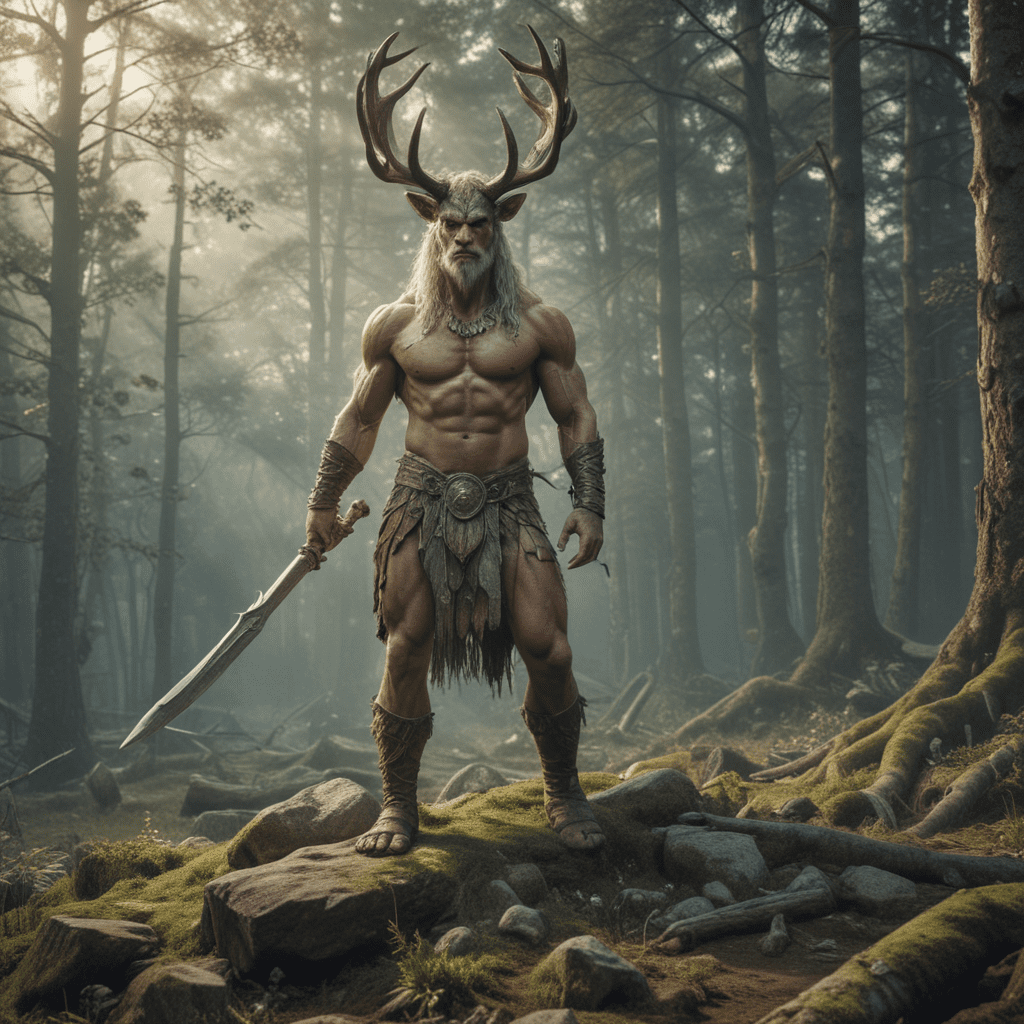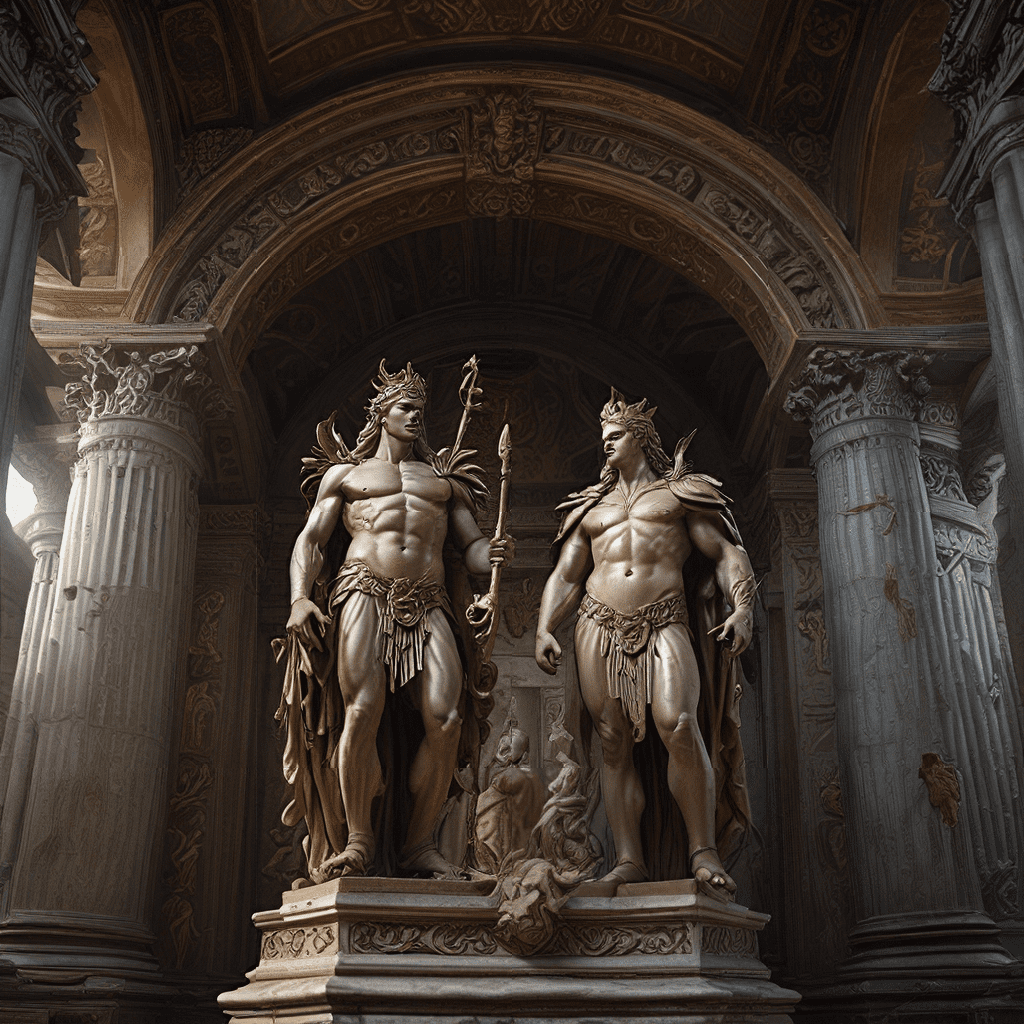Baltic Mythology: A Brief Overview
Baltic mythology, a fascinating tapestry of ancient beliefs and stories, holds a unique perspective on the interplay between war and peace. It's a system of beliefs that thrived among the ancient Baltic tribes, encompassing regions like Latvia, Lithuania, and parts of modern-day Poland. Unlike other European mythologies, such as Greek or Norse, Baltic mythology lacks a clearly defined pantheon of gods with distinct roles and relationships. Instead, it focuses on the interconnectedness of nature, human existence, and the divine forces that shape them.
In this vibrant world of myths and legends, the gods are not simply powerful entities that stand aloof from humanity. They are active participants in the lives of mortals, influencing their destinies, and embodying both the destructive forces of war and the life-giving power of peace.
The Gods of War: Perkūnas and His Role
Perkūnas, the thunder god, is the most prominent figure associated with war in Baltic mythology. He is a powerful warrior, wielding thunderbolts and lightning, and his presence is often felt during storms and battles. Perkūnas is not simply a god of violence; he represents the raw force of nature, the unpredictable power that can both create and destroy. While his wrath can be feared, he is also seen as a protector of the people, driving back enemies and ensuring the fertility of the land. His role in warfare is not about senseless brutality but about maintaining order and defending against those who threaten the balance of the world.
Perkūnas's power is not absolute. He is not above the forces of nature or the will of the other deities, including Laima, the goddess of fate. His actions are often influenced by the needs of the people and the demands of the cosmic order. When justified, Perkūnas can be called upon as a protector and deliverer, but his actions are always ultimately aimed at restoring balance to the world, even if that balance comes through the destruction of the enemy.
The Goddess of Peace: Laima and Her Influence
While Perkūnas represents the destructive force of war, Laima, the goddess of fate, embodies the life-giving power of peace. Her role extends far beyond simply being a bringer of harmony; Laima is the embodiment of destiny, weaving the threads of life and death, determining the course of events, and ensuring the continuity of the world. She is the protector of families, the guardian of children, and the weaver of the tapestry of life. While her influence is subtle and often unseen, it is pervasive and powerful.
Laima's power lies not in physical dominance, but in the gentle yet potent force of creation and sustenance. She represents the natural order, the cycles of birth, growth, and renewal that are essential for the survival of both individuals and communities. Her influence is felt in the abundance of the harvest, the prosperity of families, and the well-being of the people.
The Importance of Balance: War and Peace in Baltic Cosmology
Baltic mythology doesn't view war and peace as opposing forces locked in an eternal struggle. Instead, they are two sides of the same coin, essential elements in the cyclical nature of the cosmos. War and peace are both necessary for the natural order to maintain its balance. War can be a destructive force, but it can also serve as a catalyst for renewal, paving the way for new beginnings and the creation of something new from the ashes of the old.
This notion of balance is reflected in the relationship between Perkūnas and Laima. While Perkūnas's destructive power is necessary to maintain order, it is ultimately guided by Laima's influence. She ensures that the chaos of war does not spiral out of control, ultimately leading to the destruction of everything.
The Role of Nature in Baltic Warfare
Nature plays an integral role in shaping the perception and practice of warfare in Baltic mythology. The ancient Baltic people were deeply connected to their environment, attuned to the rhythms of nature, and believed that the gods themselves were manifested in natural phenomena. Storms, lightning, and thunder were seen as expressions of Perkūnas's power, while the land itself was believed to be infused with the spirit of the gods.
Battles were often seen as reflections of larger cosmic forces, particularly the struggle between the forces of light and darkness. Battles were fought not just on physical battlefields but also in the souls of the warriors, with fate hanging in the balance. The outcome of battles was often seen as the will of the gods, and victory was attributed to the favor of Perkūnas and other deities.
The Rituals and Sacrifices Honoring the Gods of War
The Baltic people believed that appeasement and offerings were essential to maintaining a peaceful and prosperous existence. Rituals and sacrifices played a significant role in their religious practices. They believed that by honoring the gods with offerings, they could secure their favor and protection. For Perkūnas, the god of thunder and war, these rituals were particularly important.
Many rituals involved offerings of animals, usually bulls or goats, which were seen as symbols of strength and vitality. These animals were often sacrificed during storms and battles, a way of seeking Perkūnas’s protection and intervention. In some cases, the sacrifice was accompanied by the burning of incense or the offering of honey, symbols of both spiritual purity and the abundance of the land.
The practice of offering sacrifices wasn't limited to appeasing the gods of war. The ancient Balts would also make offerings to Laima, the goddess of fate, to ensure a prosperous life, healthy children, and a good harvest. These offerings may have included food, drink, flowers, or other symbolic items, signifying the importance of life, growth, and prosperity.
The Role of Women in Maintaining Peace
While Perkūnas’s power was associated with the battlefield and the destructive force of war, women played a crucial role in maintaining peace and prosperity within their communities. Ancient Baltic society held great respect for women, particularly for their roles in the family, the home, and the community. They were responsible for raising children, tending to the farm, and preserving the values and traditions of their families.
Women were seen as the guardians of peace, the embodiment of the life-giving forces of nature, and the keepers of the cultural traditions that held their communities together. Their roles in fostering a peaceful and harmonious society were seen as essential.
In many Baltic myths and legends, women are depicted as powerful figures who can influence the course of events and even challenge the authority of the gods. For example, the goddess Laima, while a powerful figure herself, is often depicted in close association with women and embodies the spirit of female strength and resilience.
The Evolution of Baltic Mythology: The Influence of Christianity
The arrival of Christianity in the Baltic region during the 13th and 14th centuries had a profound impact on Baltic mythology. The Christian church actively sought to suppress pagan beliefs and practices, often reinterpreting or demonizing traditional myths. Many of the deities, like Perkūnas and Laima, were assimilated into the Christian worldview, often being portrayed as demonic forces or fallen angels.
However, some elements of Baltic mythology survived, often blending with Christian beliefs to create a unique syncretic religious culture. The ancient beliefs about the power of nature, the importance of the cycle of life and death, and the role of women in society continued to influence the people of the Baltic region, even after the adoption of Christianity.
Modern Interpretations of Baltic Mythology: War and Peace in Contemporary Literature and Art
In contemporary Baltic culture, there is a growing interest in reclaiming and reinterpreting the traditions of Baltic mythology. Artists, writers, and scholars are actively engaging with these ancient beliefs, exploring their relevance to contemporary issues and using them to create new works of art and literature.
Baltic mythology’s themes of war and peace continue to resonate with modern audiences, reflecting the complexities of human existence and the ongoing struggle between destruction and creation. Modern interpretations of these ancient myths explore the consequences of war, the importance of peace and reconciliation, and the enduring power of the natural world.
The Legacy of Baltic Mythology: Understanding War and Peace in the Modern World
Despite the passage of time and the influence of Christianity, the legacy of Baltic mythology continues to inform our understanding of the world around us. The themes of war and peace, the interconnectedness of nature and humanity, and the importance of balance remain relevant to contemporary societies.
Baltic mythology’s unique perspective on war and peace offers a valuable lens through which to examine the challenges facing the world today. It reminds us that war is not simply a destructive force but a complex phenomenon with profound social, political, and psychological consequences. It also highlights the importance of peace, reconciliation, and the need to cultivate a harmonious relationship with the natural world.
FAQ
What are some of the most important deities in Baltic mythology?
Some of the most important deities in Baltic mythology include Perkūnas, the god of thunder and war; Laima, the goddess of fate; and Jūratė, the goddess of the sea.
What is the role of nature in Baltic mythology?
Nature plays a central role in Baltic mythology. The ancient Balts believed that the gods manifested themselves in the natural world and that the environment was infused with their power.
How did Christianity influence Baltic mythology?
The arrival of Christianity in the Baltic region led to the suppression of pagan beliefs and practices. Many of the deities were assimilated into the Christian worldview, often being portrayed as demonic forces or fallen angels.




